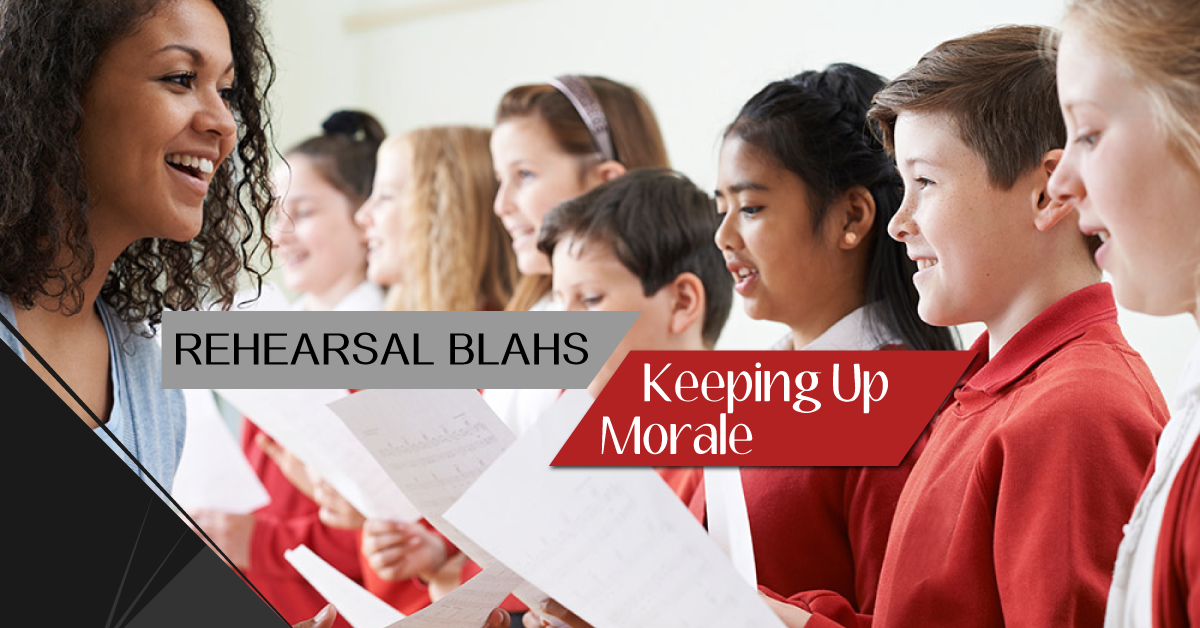The Curtain Call… Already?!
A colleague of mine once told me that he always waits until the technical or dress rehearsal to choreograph the curtain call. His reasoning was that the curtain call should be the absolute last thing added to the show because it signifies that the show is done, and to choreograph the curtain call before the final rehearsal would be bad luck.
It’s true that theatre people tend to be a superstitious lot (“the Scottish play,” anyone?), but I disagree with my colleague’s statement. While the curtain call should be among the last things added to the show, it should not be choreographed during tech or dress rehearsal, and it should not be crammed in at the last minute as an afterthought. Good curtain calls are planned in advance and well-rehearsed so they are smooth, flowing, and polished. They are practiced as part of the show – because they are part of the show. Think of the curtain call as your last opportunity to really wow the audience!
There are many different ways to approach choreographing the curtain call. Here are eight tips to consider for your curtain call:
1. First and foremost, consider the overall length of the curtain call and how many bows will occur. While your audience will want to acknowledge the work of the students, clapping for bows that go on and on is tiring, and frankly comes across as self-indulgent (especially if every single student gets their own bow). Think about it from an audience member’s perspective – would you want to be clapping for five minutes straight?
2. What order will the bows go in? The most common order for bows to occur is ensemble members first, featured roles second, and leads at the end. However, this does put the focus on starring roles rather than on the full ensemble.
If it makes sense for your show, consider a full company bow instead of many individual bows. Or, organize bows by logical characters groupings or by grade level (for example, graduating seniors take the final t bow). This encourages more of an ensemble focus.
3. Will your curtain call be set to music? If so, what song will you use? That can help determine the time frame for your curtain call, and keep the bows from going on for too long.
4. How will your students bow? Will they hold hands and bow together, or will they bow individually? Will the women curtsey? Will the bows involve sweeping hand motions and flourishes, or will they be simple, with the cast members’ hands at their sides? Who will lead group bows? (Tip: Have someone near the middle of the row lead the bows so they flow nicely together, rather than a weird flip-flop fanning of bows.)
5. Will the curtain call sequence be highly choreographed , or will students simply walk onstage and bow? Will the actors bow in character or out of character? (For example, during curtain calls in Disney’s High School Musical 2 Jr., my actors would come onstage, strike a pose that their character does during the show, and then bow, which was a lot of fun.)
6. Crew acknowledgment: Many curtain calls feature gestures to the tech booth, to the orchestra, and/or to the backstage team. This is a good way to ensure that the crew is acknowledged.
7. How will students exit the stage? This sounds like a really picky point, but it’s important to consider. Do you want students to file off in a line, exit through a particular door or curtain, or just run off however they like? Will they reprise part of a song at the end of the bows? Will they wave or acknowledge the audience in any way before they exit?
8. Allow time to practice the bows. Treat curtain call like any other part of the show. To avoid confusion when it comes to show time, have the students go right to the absolute end of the show when doing runs, and practice bowing and exiting the stage.
Related Articles
The Drama Classroom Companion
by Lindsay Price & Kerry Hishon
The Drama Classroom Companion is filled with articles and exercises to build the skills needed for theatrical performance as well as real world skills like creative thinking, critical thinking, collaboration, and communication.
The Rehearsal Companion
by Kerry Hishon
You’ve chosen the play, paid the royalties, done the script analysis, held your auditions, and cast the show. Tomorrow is the first rehearsal. Are you ready? Really ready? The Rehearsal Companion can help!





